Pan is one of the stars of our Fantastique exhibition as he has been portrayed many times in ceramic art. He is the nature god of wilderness, woods and shepherds and is often associated with fertility and springtime. This garden roundel was modeled by Phoebe Stabler for the Poole Pottery in the 1920s.
In classical mythology, Pan is generally portrayed as a half-human creature like a satyr with the legs, hoofs and horns of a goat although some early Greek vase representations show him in human form with a horse’s tail. His Roman counterpart was known as Faunus. Wedgwood copied early representations of him from classical statuary for their black basalt sculptures, such as the Piping Faun, which was based on a Roman marble copy of a 4th century BC bronze in the Louvre. Wedgwood was also inspired by the French 18th century rococo sculptor Clodion and his Infant Satyr and Running Faun were reproduced in Black Basalt and Majolica. Pan, satyrs and fauns continued to be a popular motif in Majolica wares by Wedgwood and Minton throughout the 19th century.
The Pan-pipes, which the god made from reeds, are named Syrinx after the forest nymph who was transformed into a water reed to escape his affections. The wild sound of the Pan-pipes was so seductive that birds and animals drew closer and the trees swayed as if dancing to the sound. Pan was so arrogant about his musical talents that he challenged Apollo to a musical duel. However, the golden lyre played by Apollo caused everything to stop moving, even the babbling brook and the wind, so that his superior heavenly music could be appreciated without distraction.
Pan was a regular companion of Dionysus/Bacchus and his drunken tutor, the satyr Silenus. In Victorian England, Pan came to represent man’s darker animal side that needs to be repressed. He became a significant figure in the Romantic movement of western Europe during the 19th century, when he epitomized earthly sensual longing in contrast to heavenly reason, piety and restraint. The French symbolist Stéphane Mallarmé wrote about the erotic experiences of a faun who has just woken up from his afternoon sleep in his poetic masterpiece L’Apres Midi d’un Faune. The dreamlike monologue of the encounters with nymphs inspired music by Debussy and a sensational ballet by Nijinsky. First performed by the Ballet Russes in 1912, the set and costumes were designed by Leon Bakst in the style of an archaic Greek vase painting.
Popular magazines were named after the sensual god. The journal Pan, published in Berlin between 1895 and 1900, was a hugely influential arts magazine during the Art Nouveau era. Pan was also the title of an English satirical journal "for saints and cynics" first published in 1919. British and European ceramic artists were very enamored with Pan during the 1920s and he was portrayed many times by artists at Goldscheider, Hutschenreuther, Royal Copenhagen and Rosenthal. The earliest and most spectacular is The Sin modeled by Walter Schott in bronze in 1903 and reproduced in porcelain by Rosenthal.
Charles Vyse at his London studio also modeled several figures of satyrs and fauns, playing leap-frog with joie de vivre. In Folies Bergere from 1927, they gambol with a lamb symbolizing spring. Vyse’s Sister of Pan is a particularly striking sculpture that he exhibited at the Royal Academy annual exhibition in 1927. His former friend and later rival Harry Parr also exhibited a Pan figure riding on a cockerel at the same RA exhibition.
Come see all the Pan figures this springtime in the Fantastique exhibit at WMODA.
Related pages...
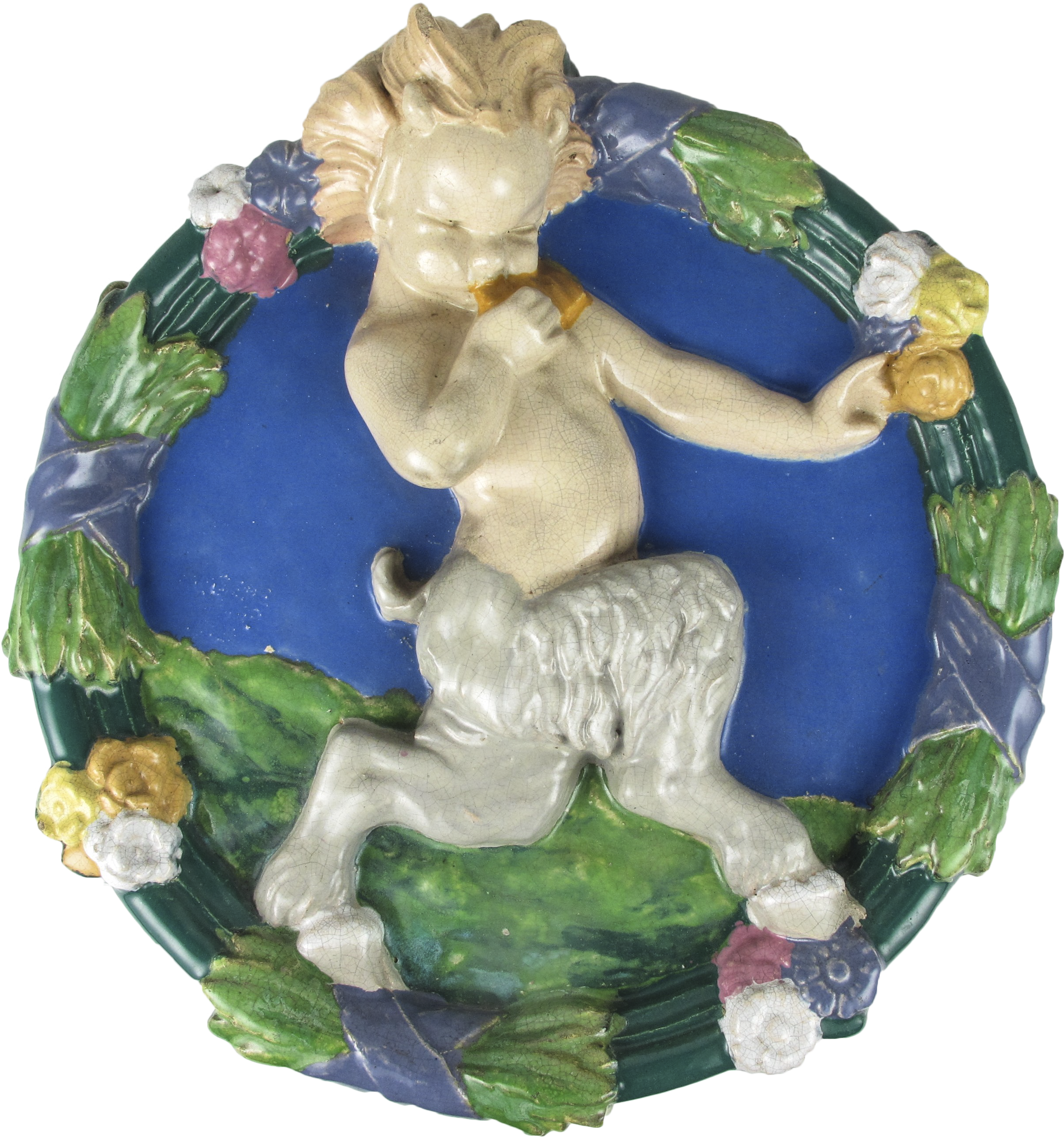
Poole Pottery Pan Garden Roundel
by P. Stabler
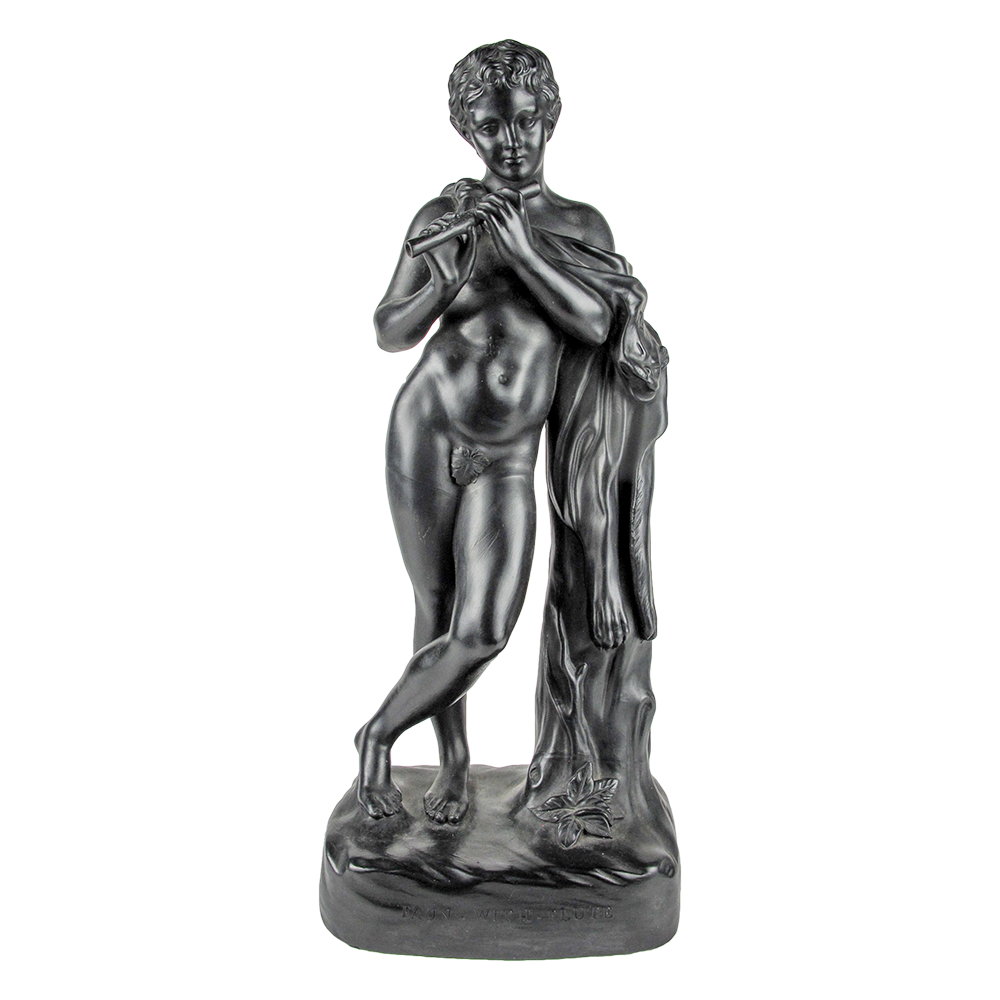
Wedgwood Piping Faun
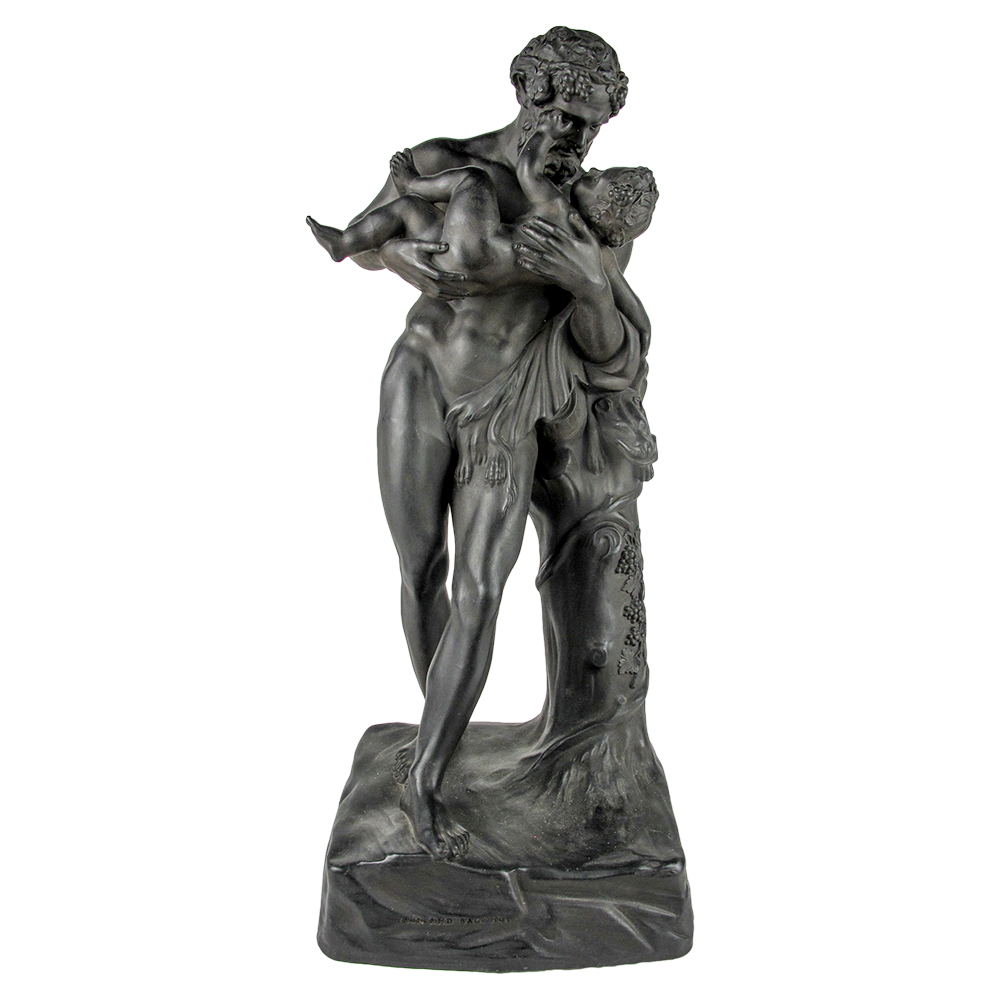
Wedgwood Silenus and Bacchus
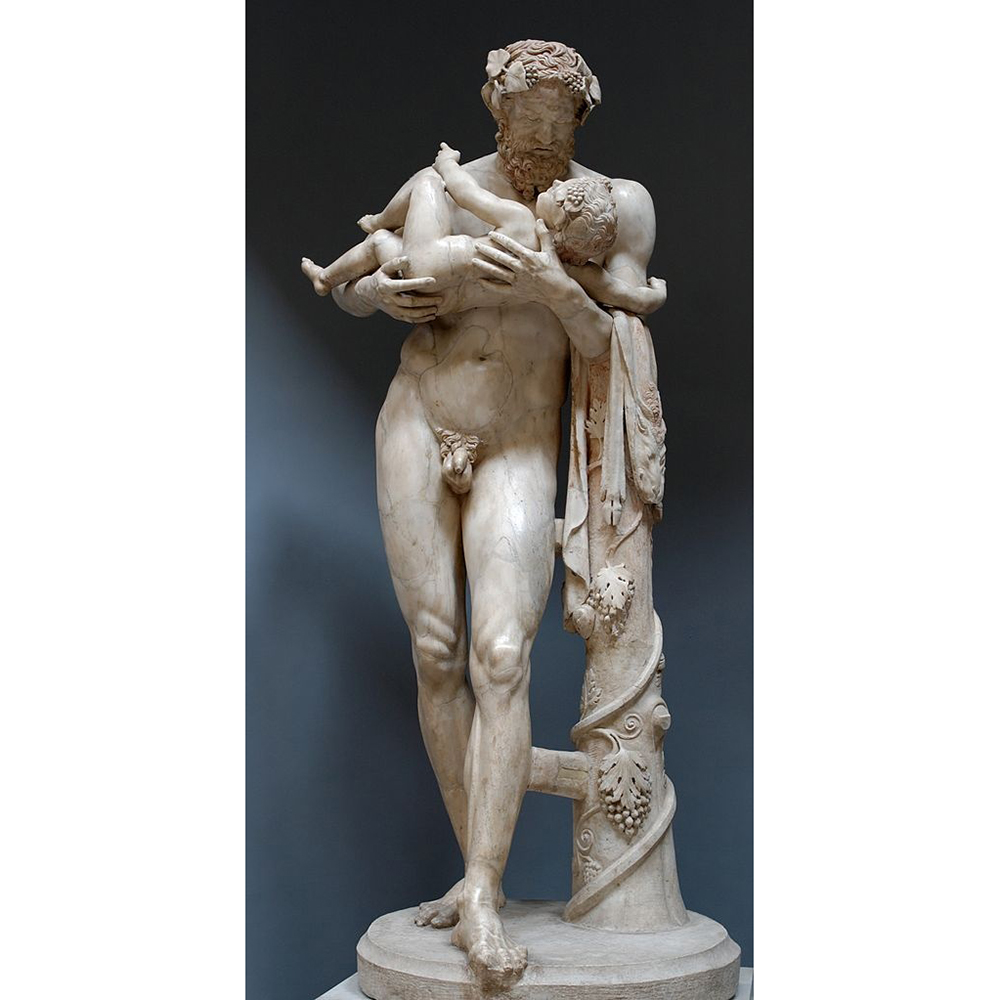
Silenus
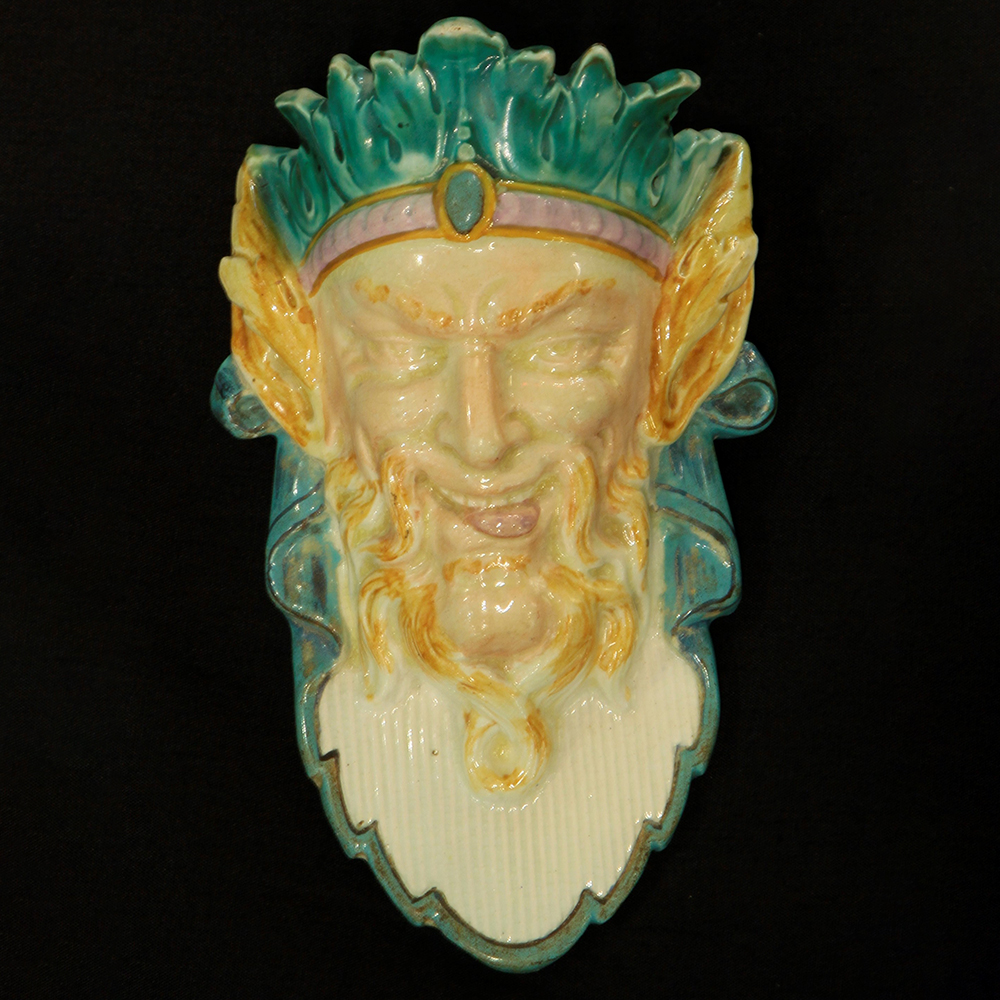
Wedgwood Satyr
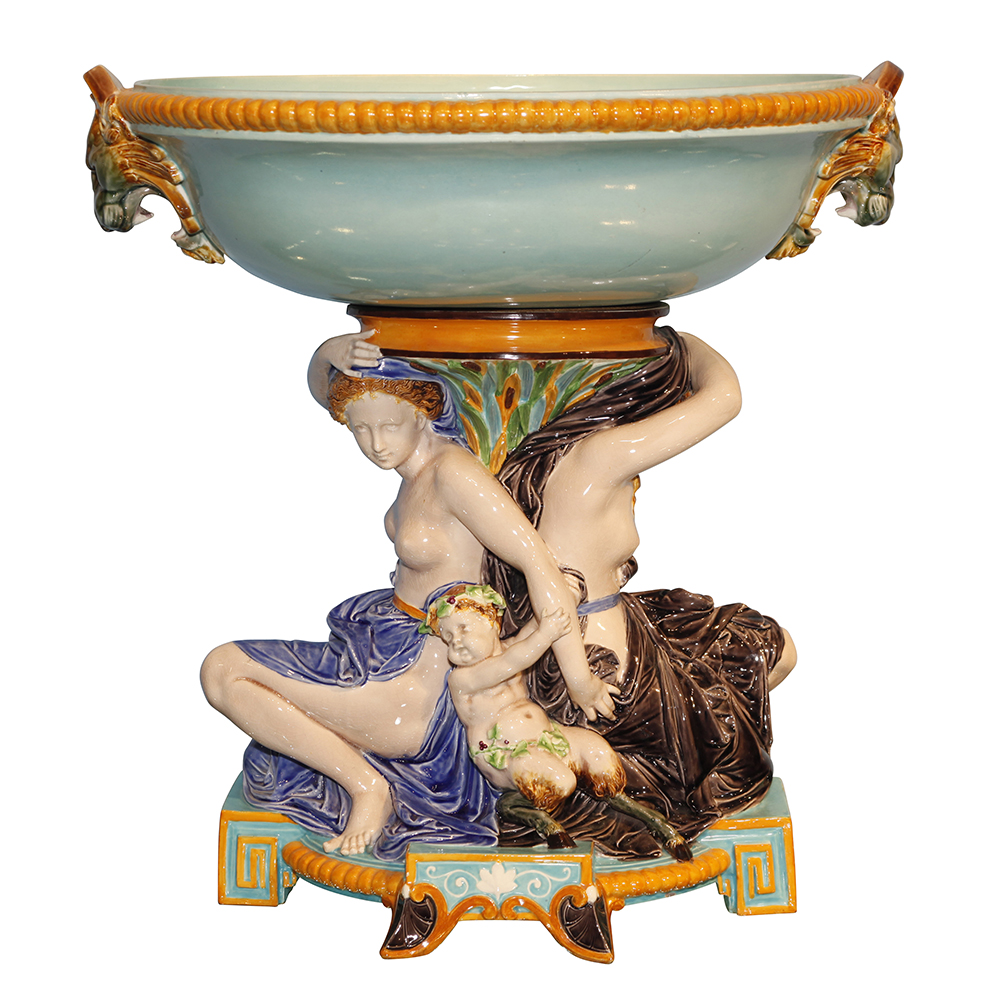
Wedgwood Nymphs
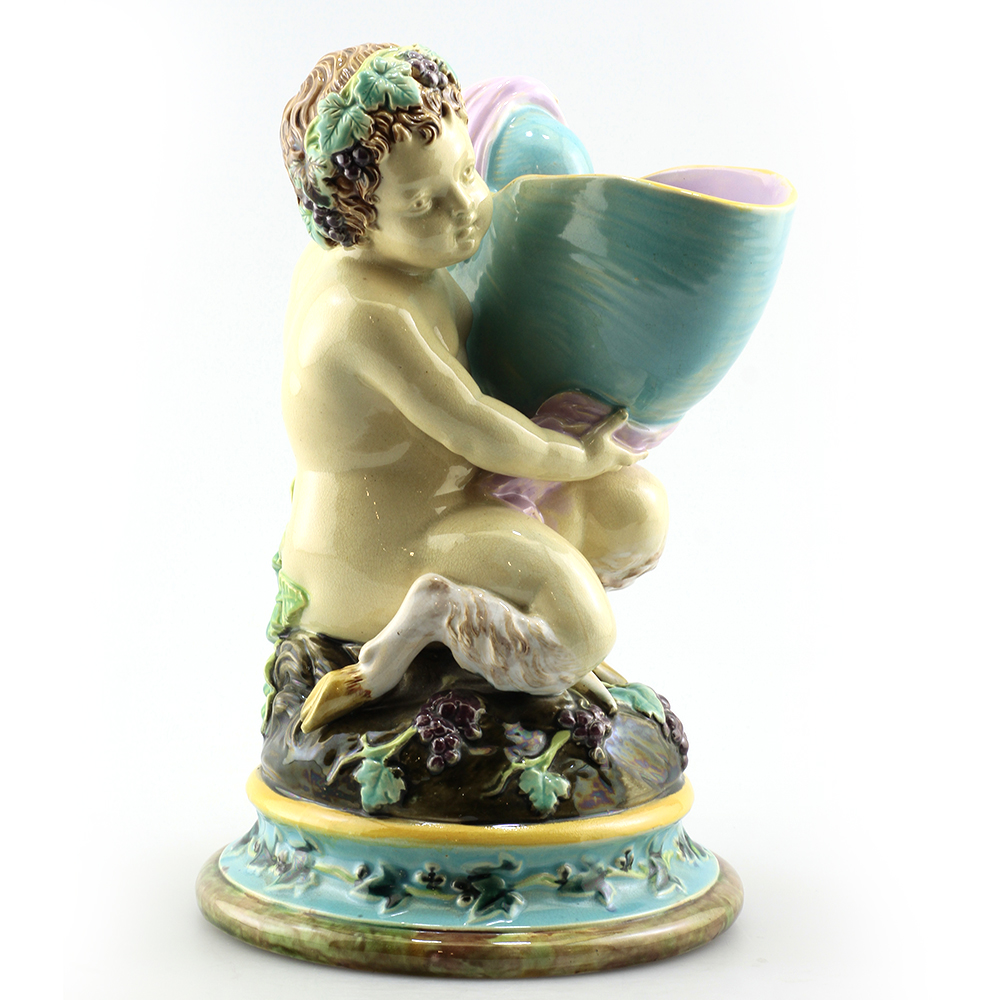
George Jones Faun and Conch
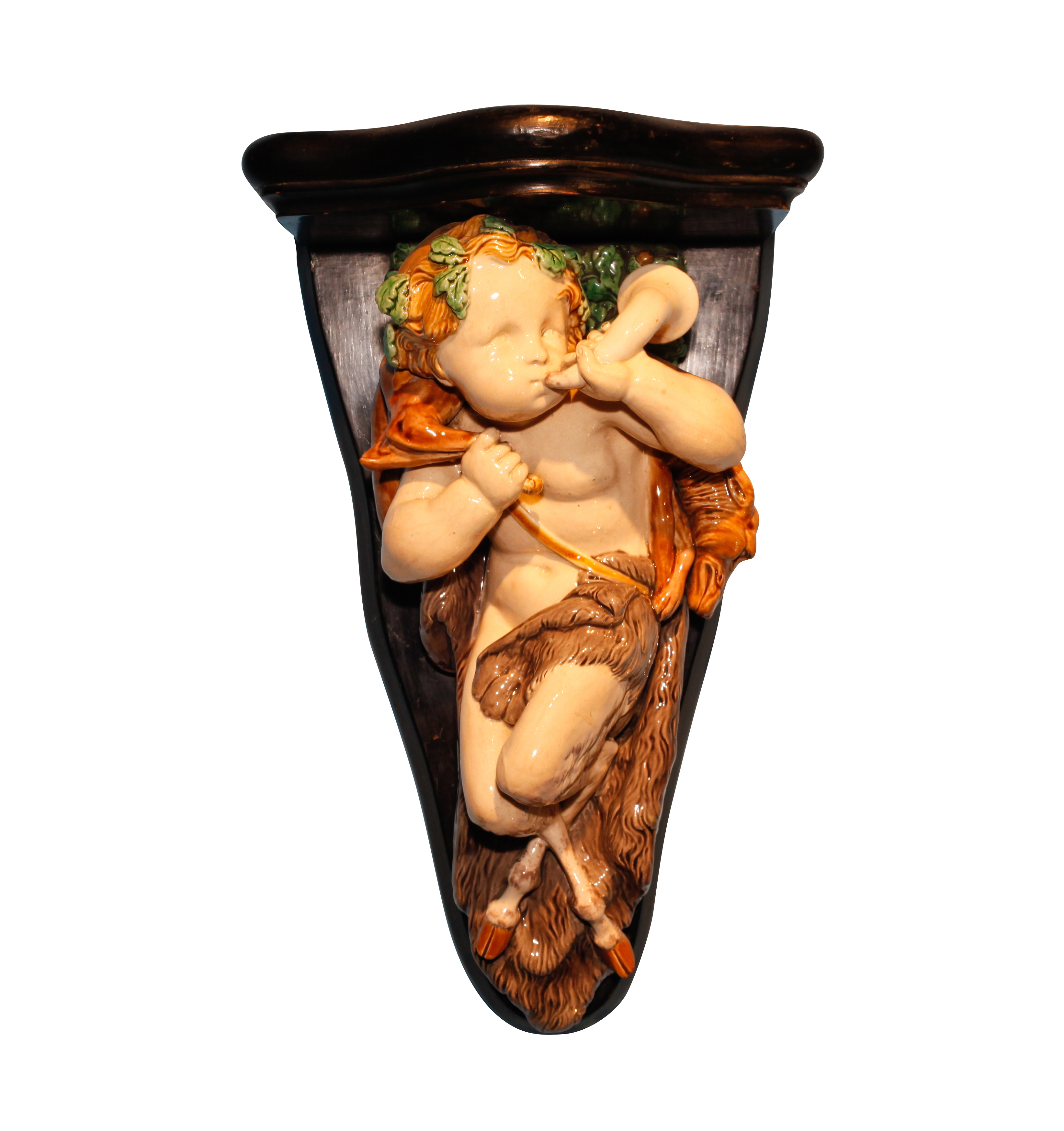
Minton Hunting Brackets
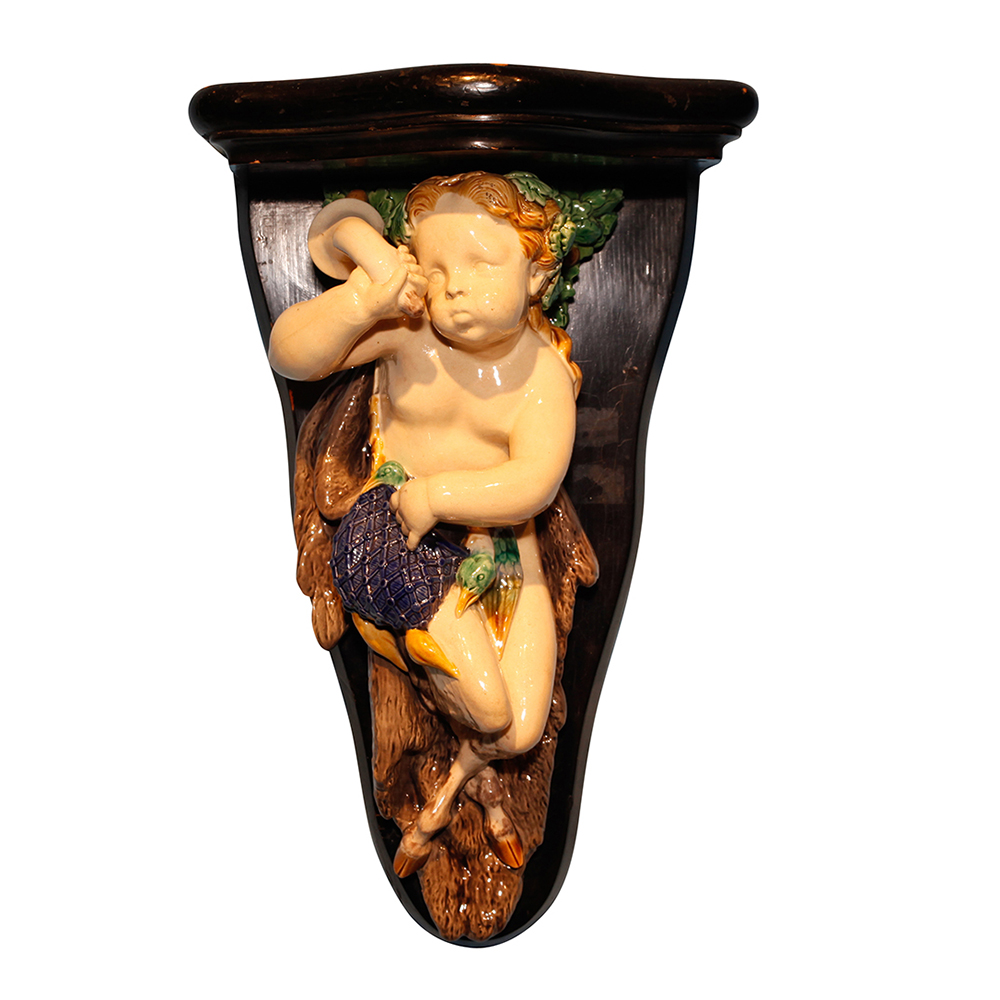
Minton Hunting Brackets
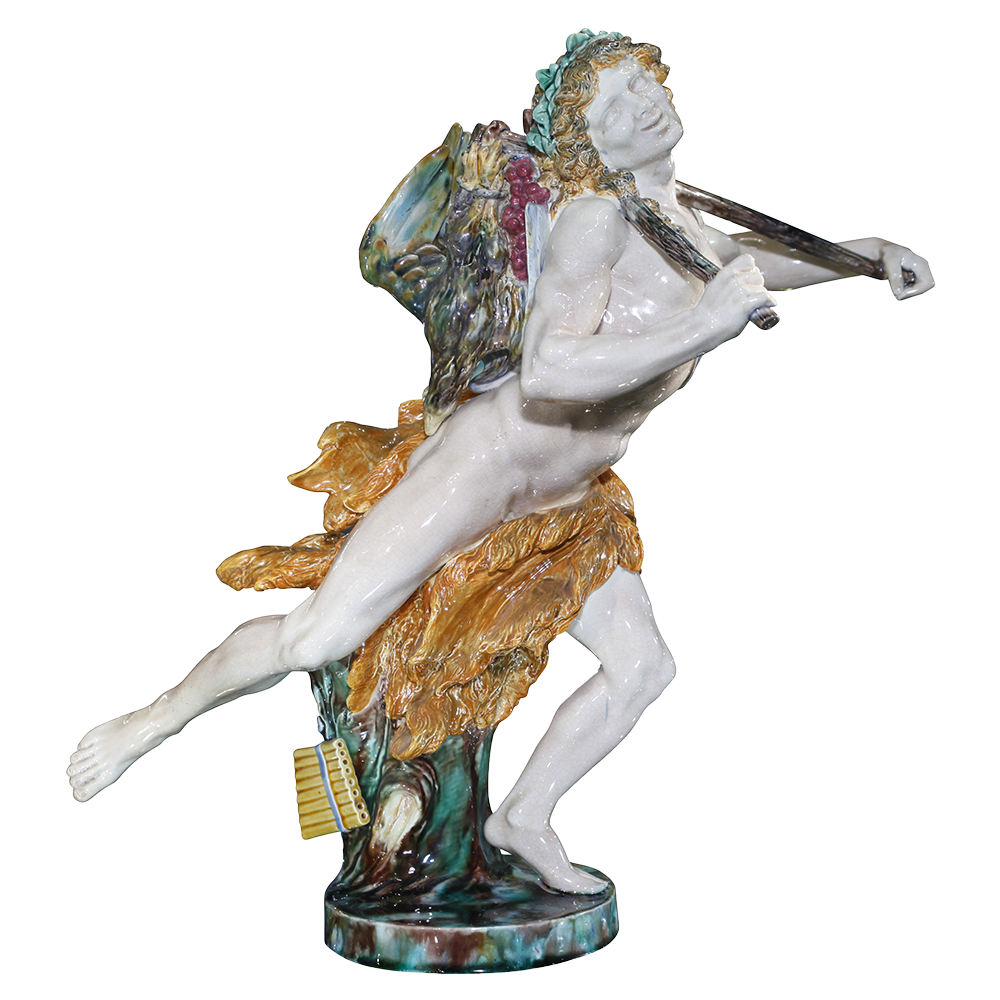
Wedgwood Faun
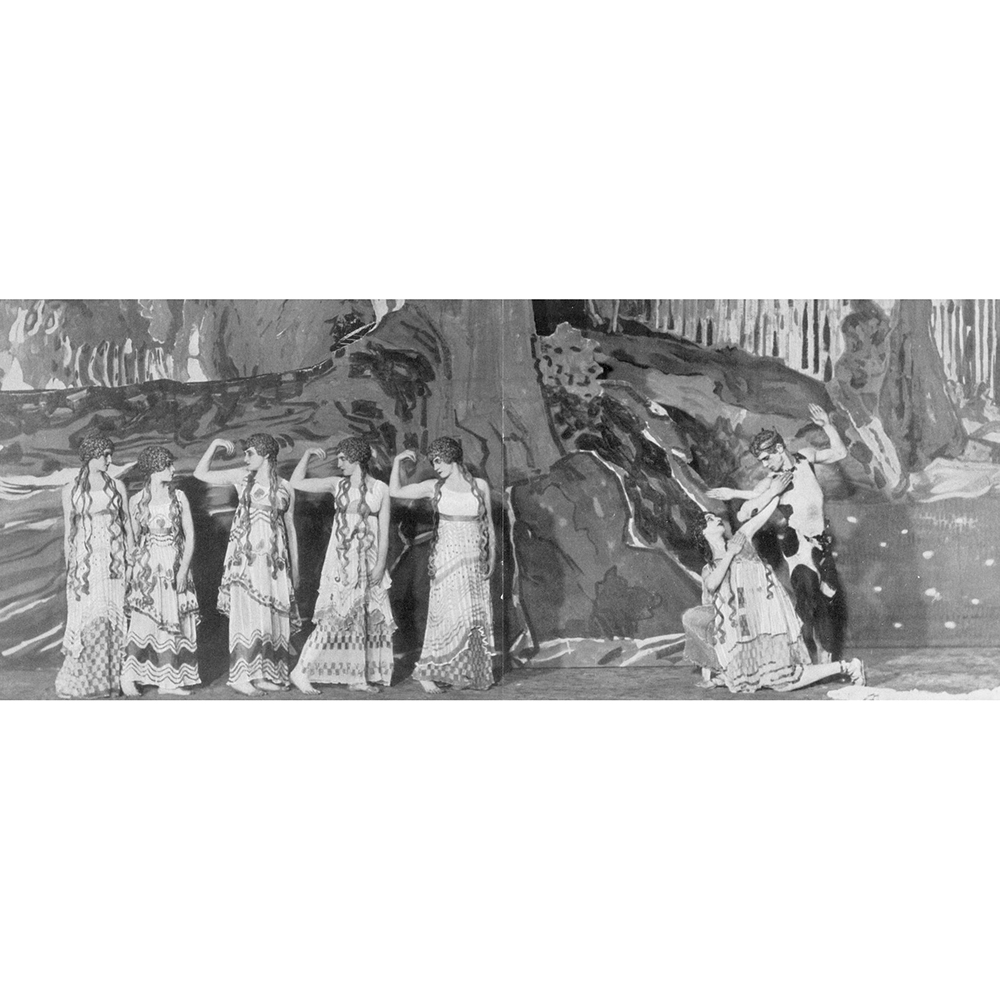
Ballet Russes L’Apres Midi d’un Faune
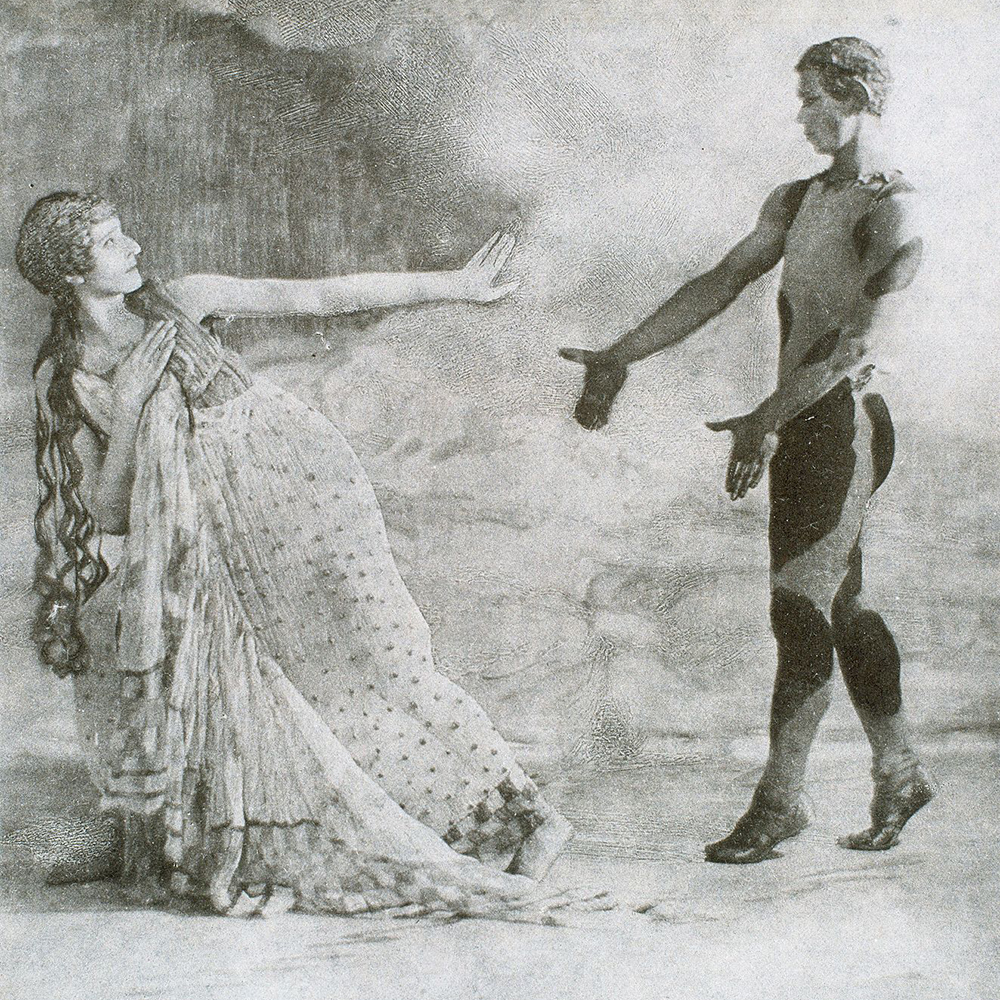
L’Apres Midi d’un Faune
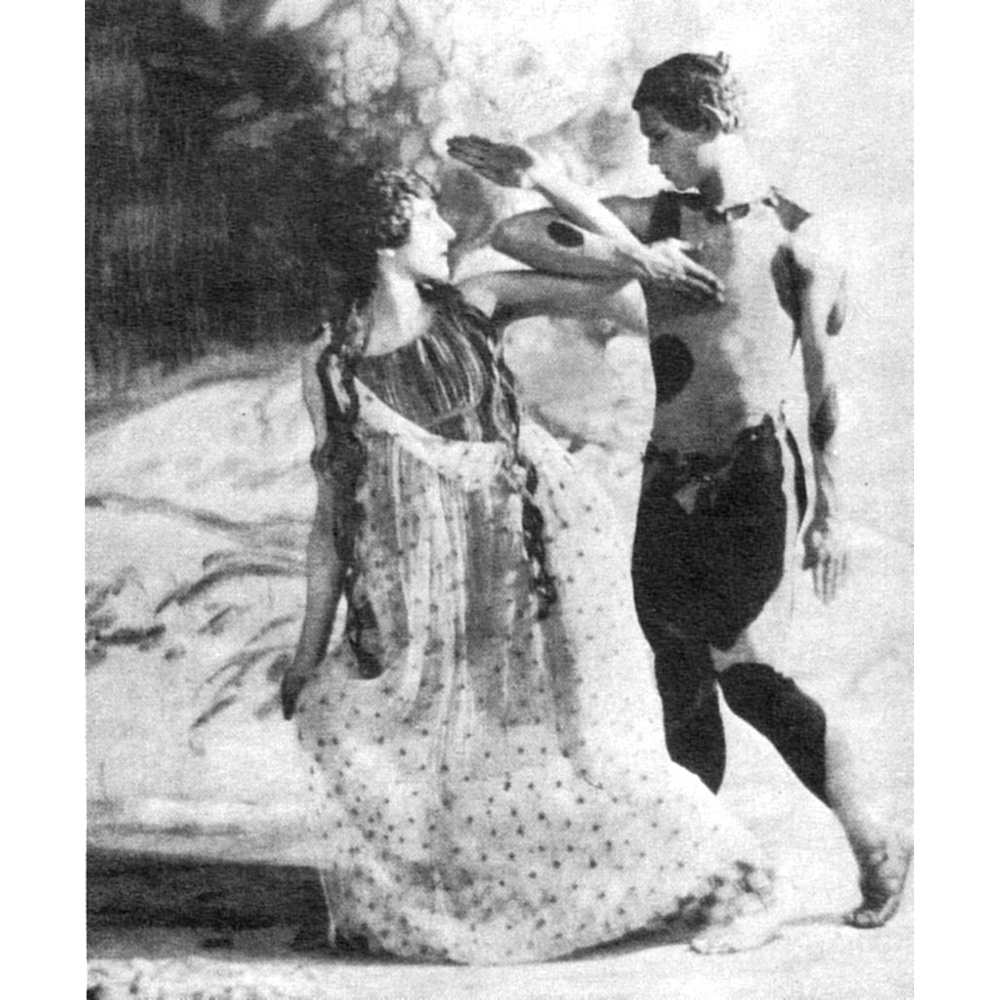
Nijinsky faune and nymph entwined
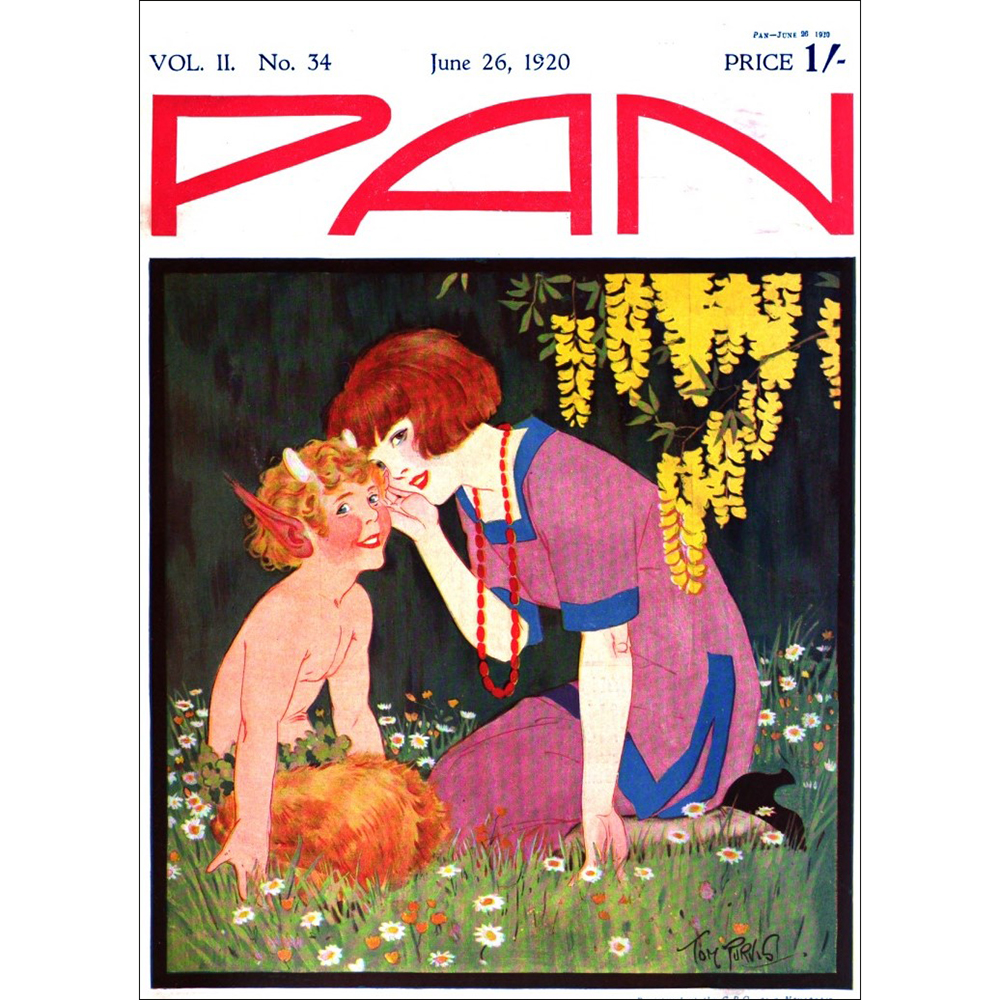
Pan cover 1920

Pipes of Pan
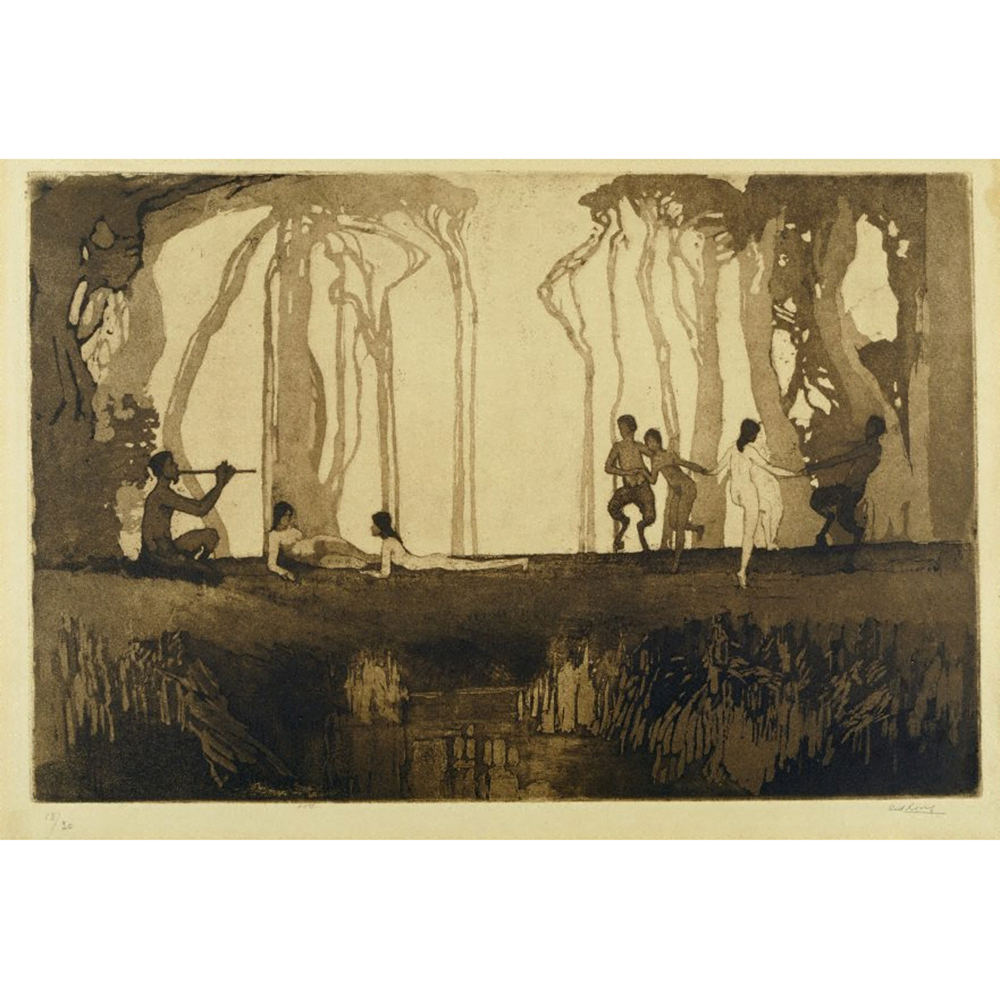
Pan by S. Long
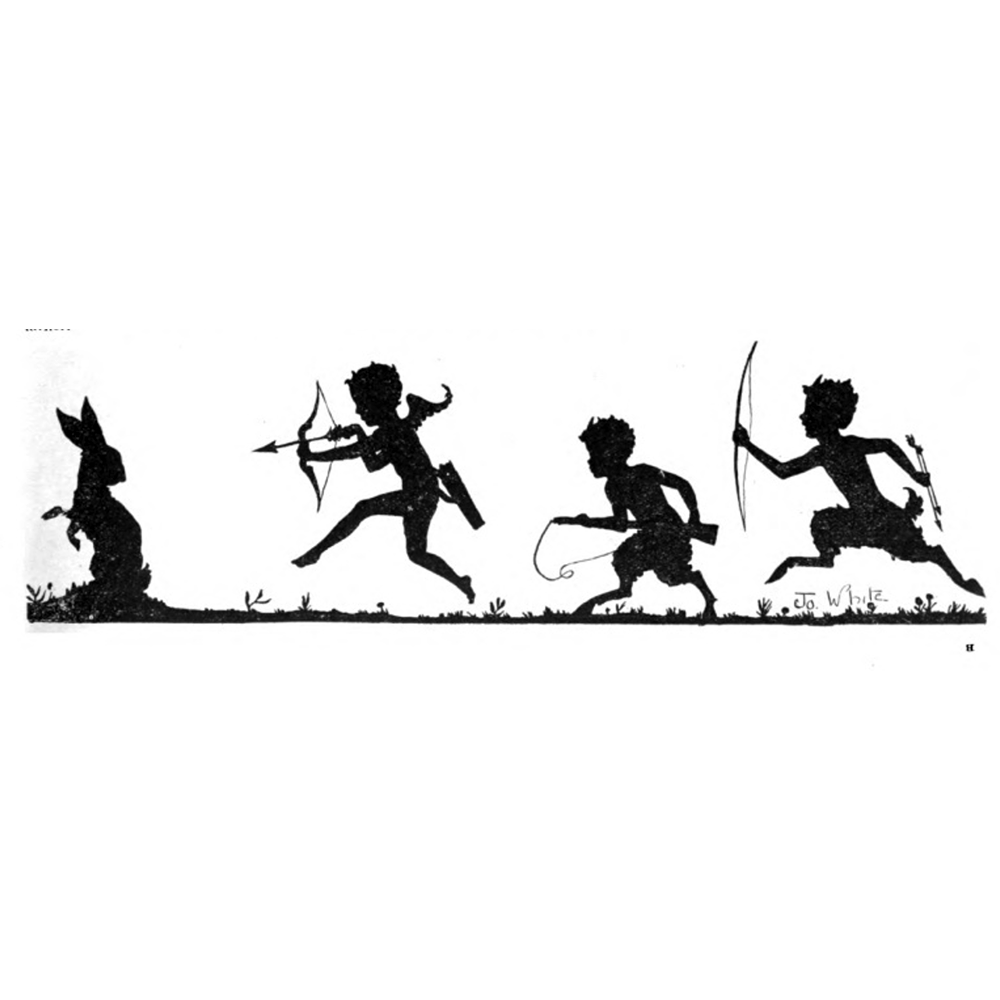
Pan and Cupid
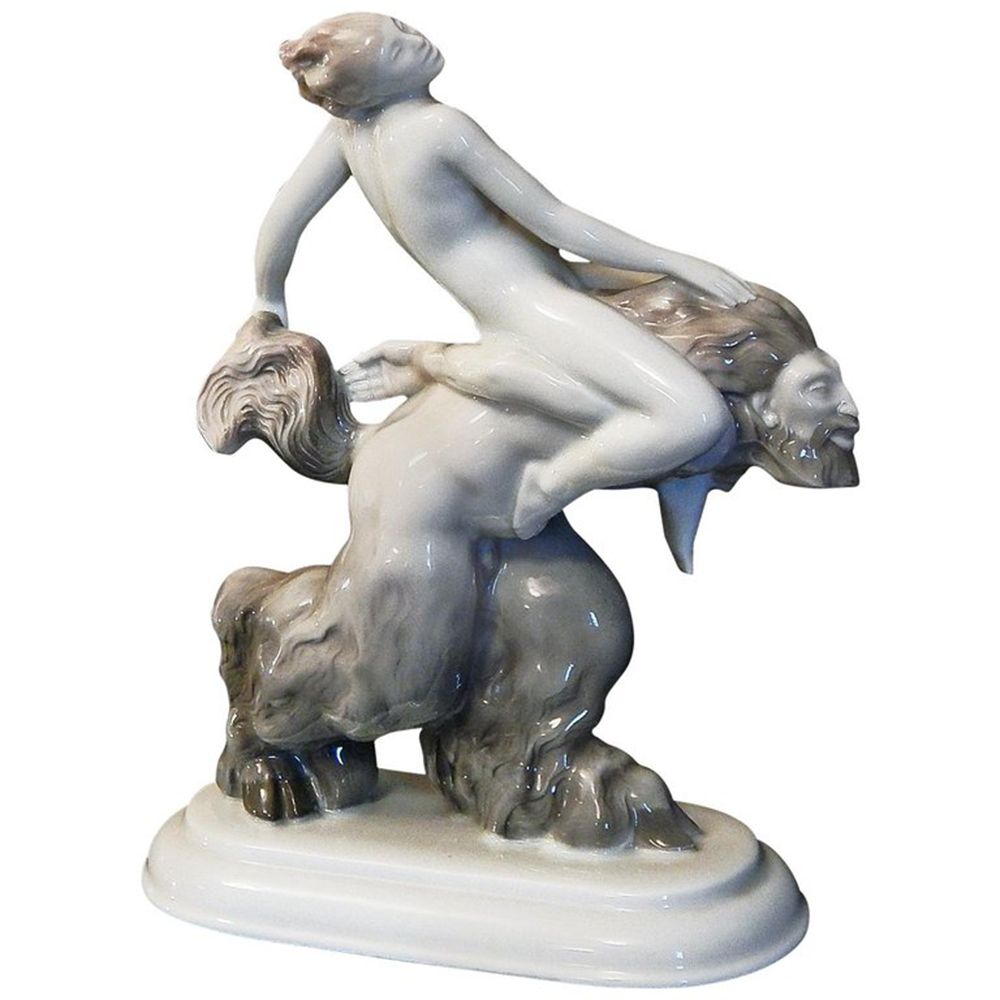
Hutschenreuther Swept Away by K. Tutter
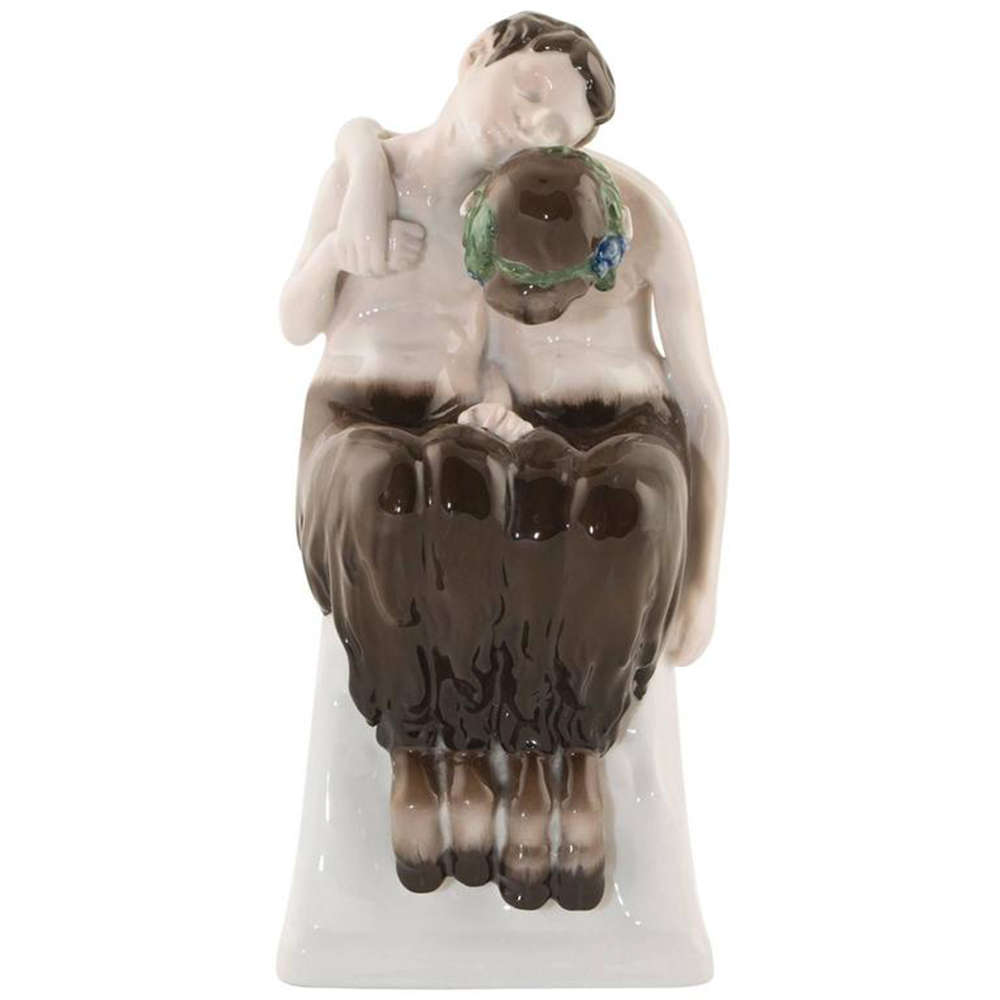
Rosenthal Seated Fauns
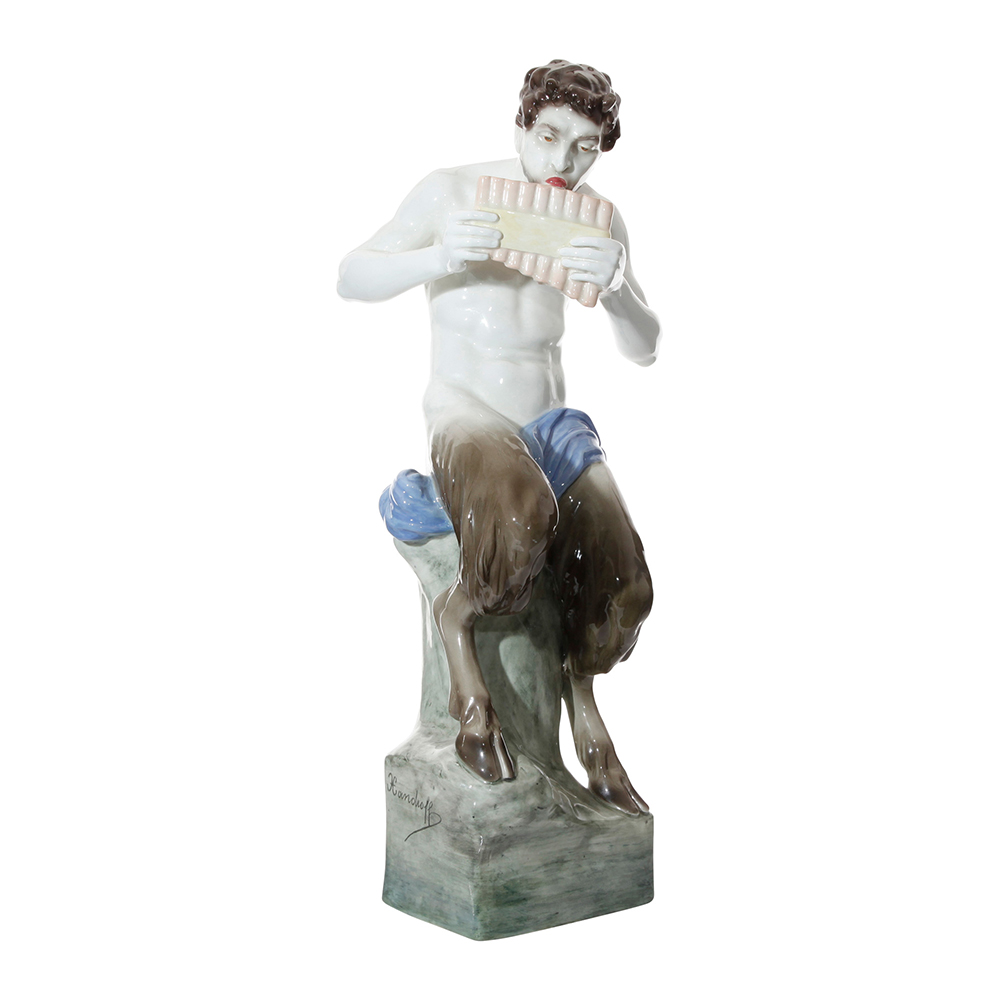
Goldscheider Pan
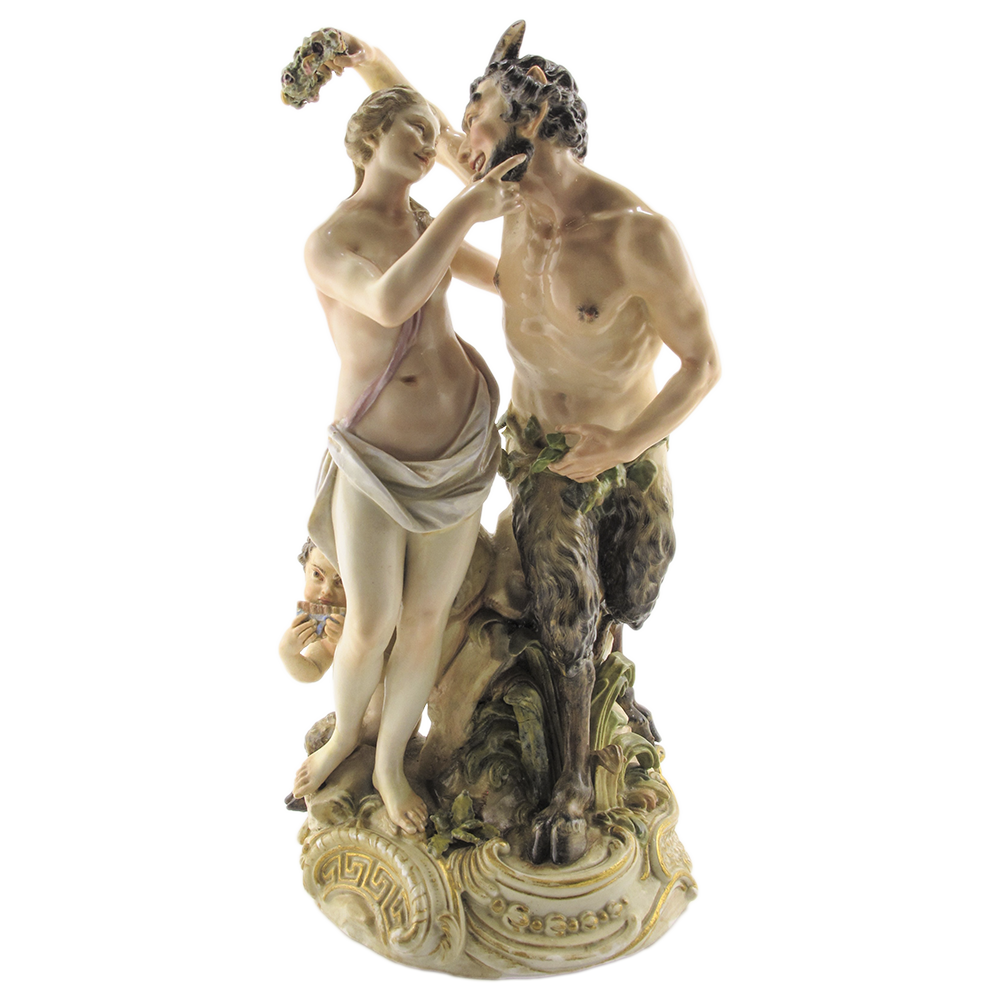
Meissen Satyr with Nymph by J. J. Kaendler
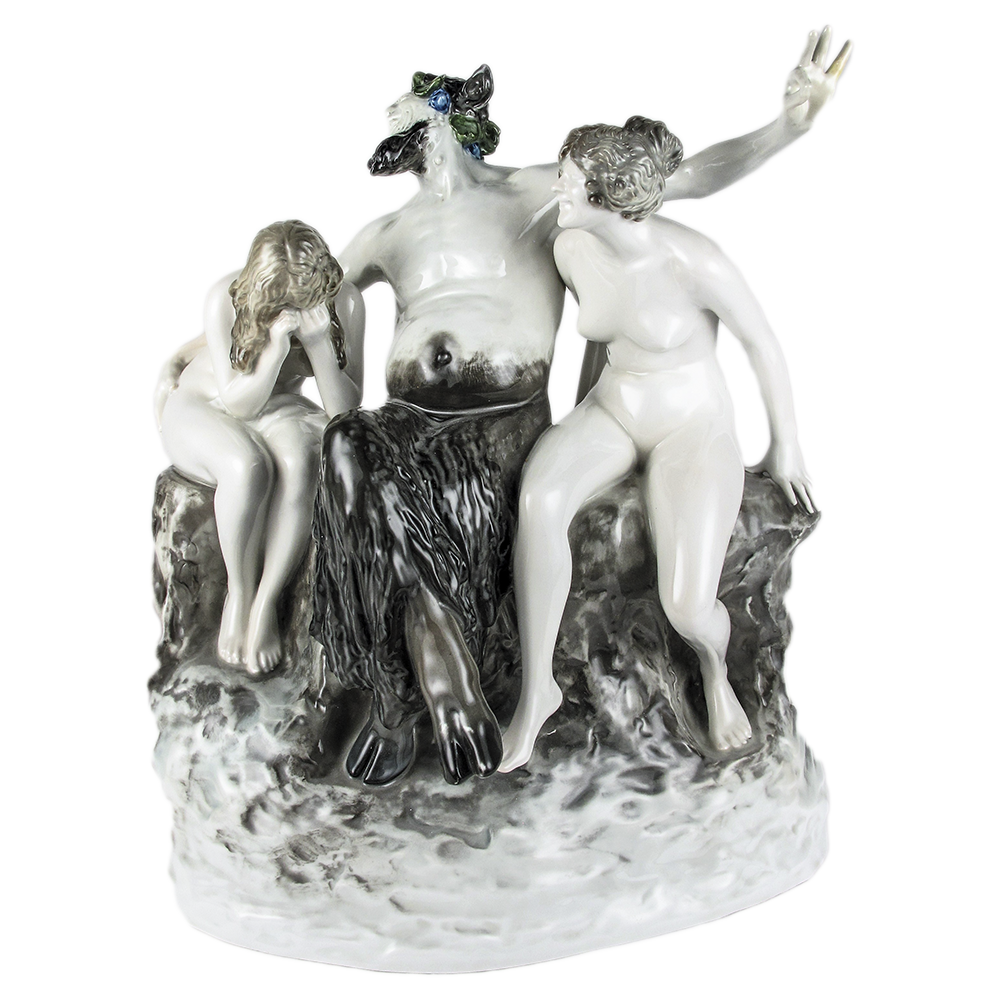
Rosenthal The Sin
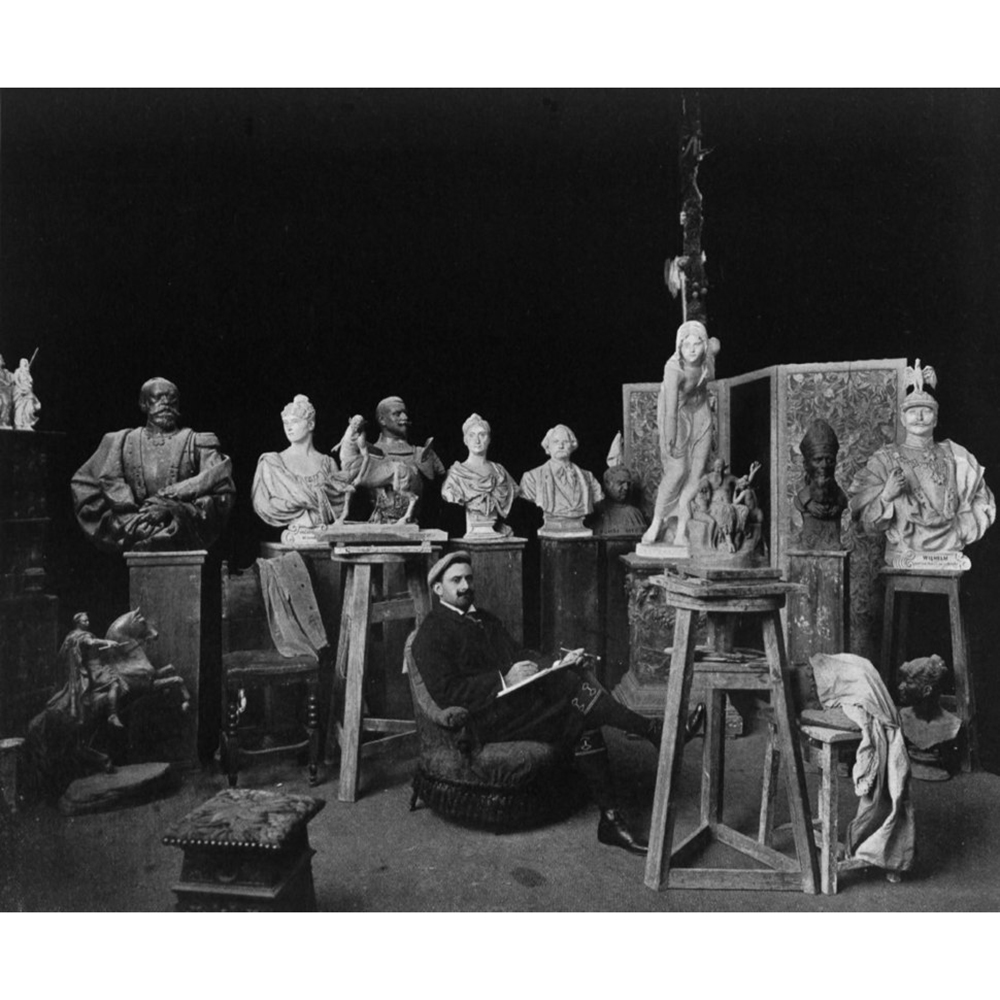
Walter Schott Studio
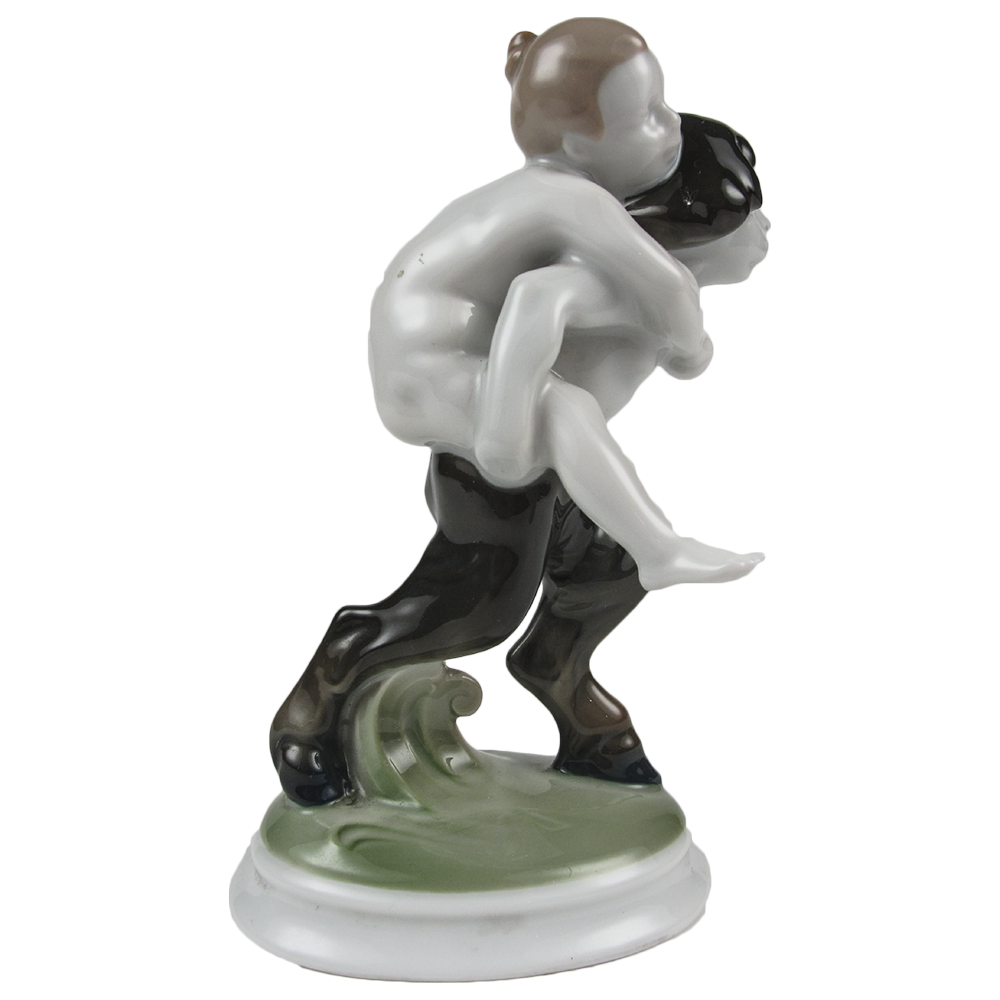
Rosenthal Faun Flight
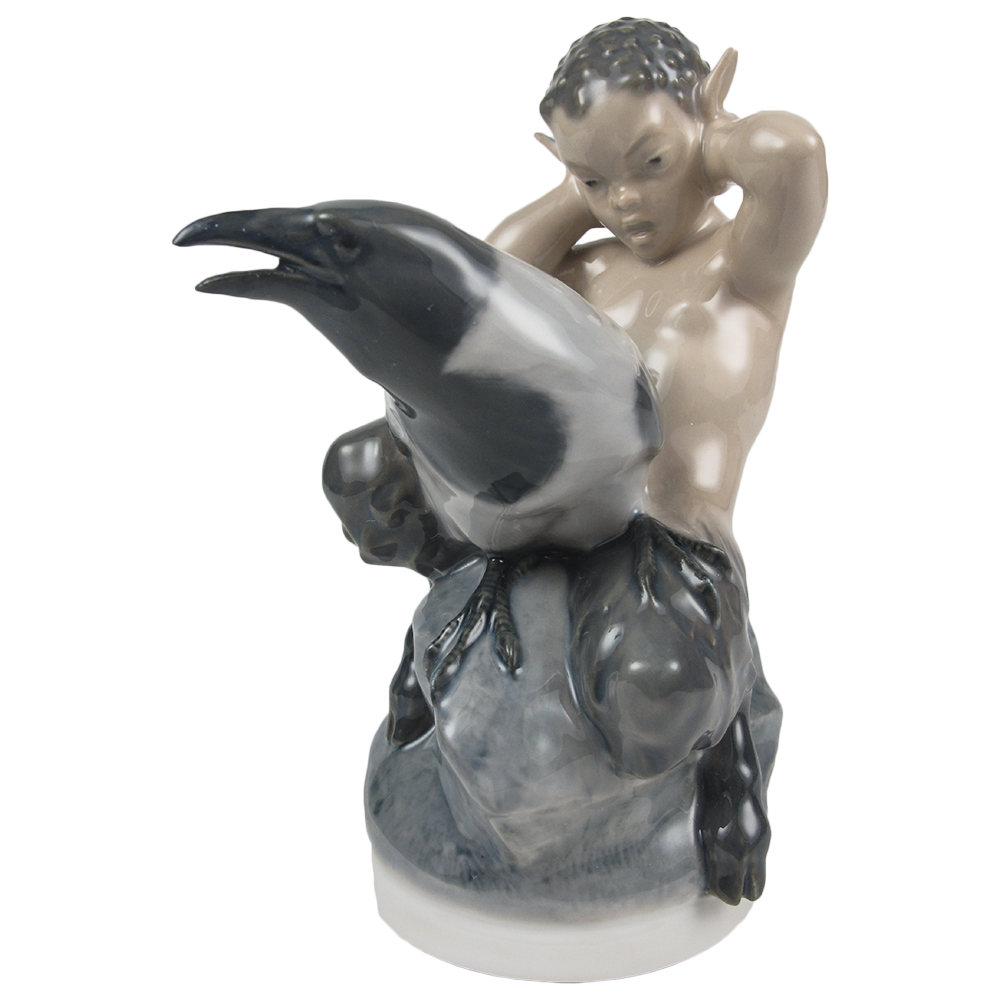
Royal Copenhagen Faun with Crow
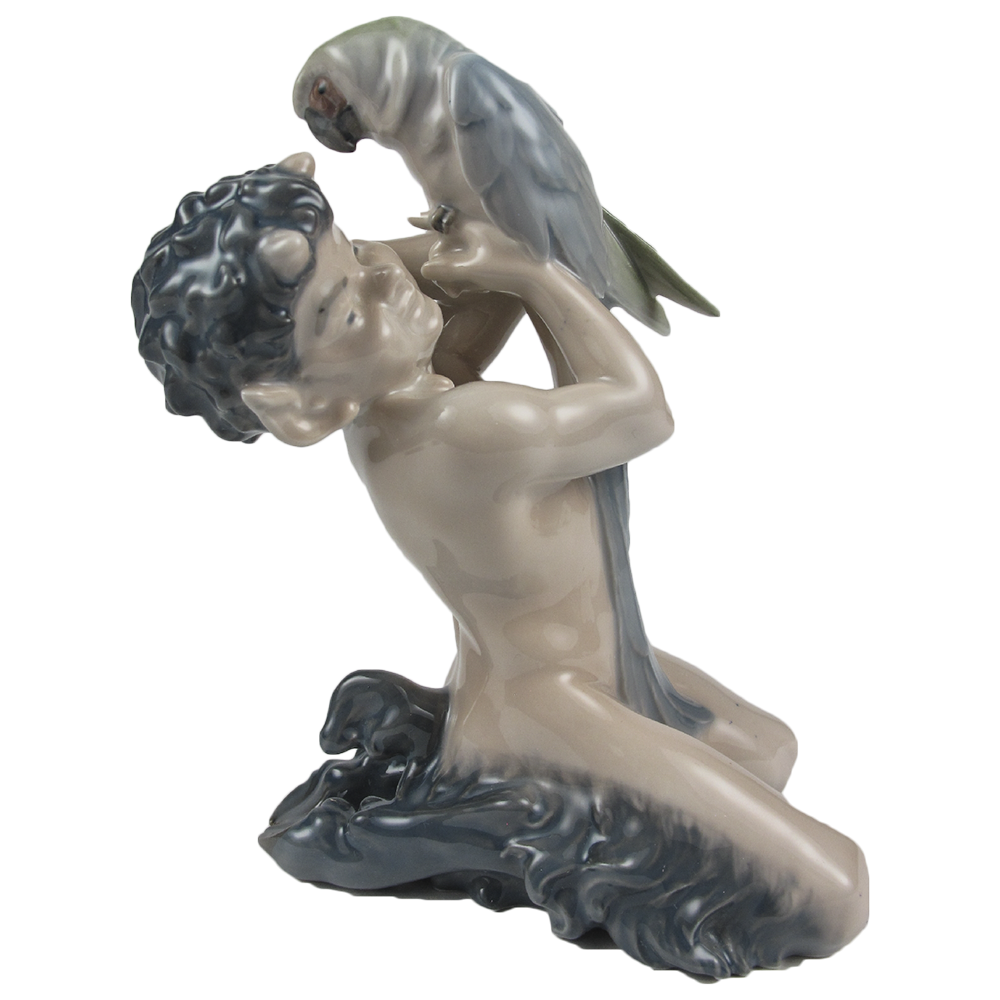
Royal Copenhagen Faun with Parrot
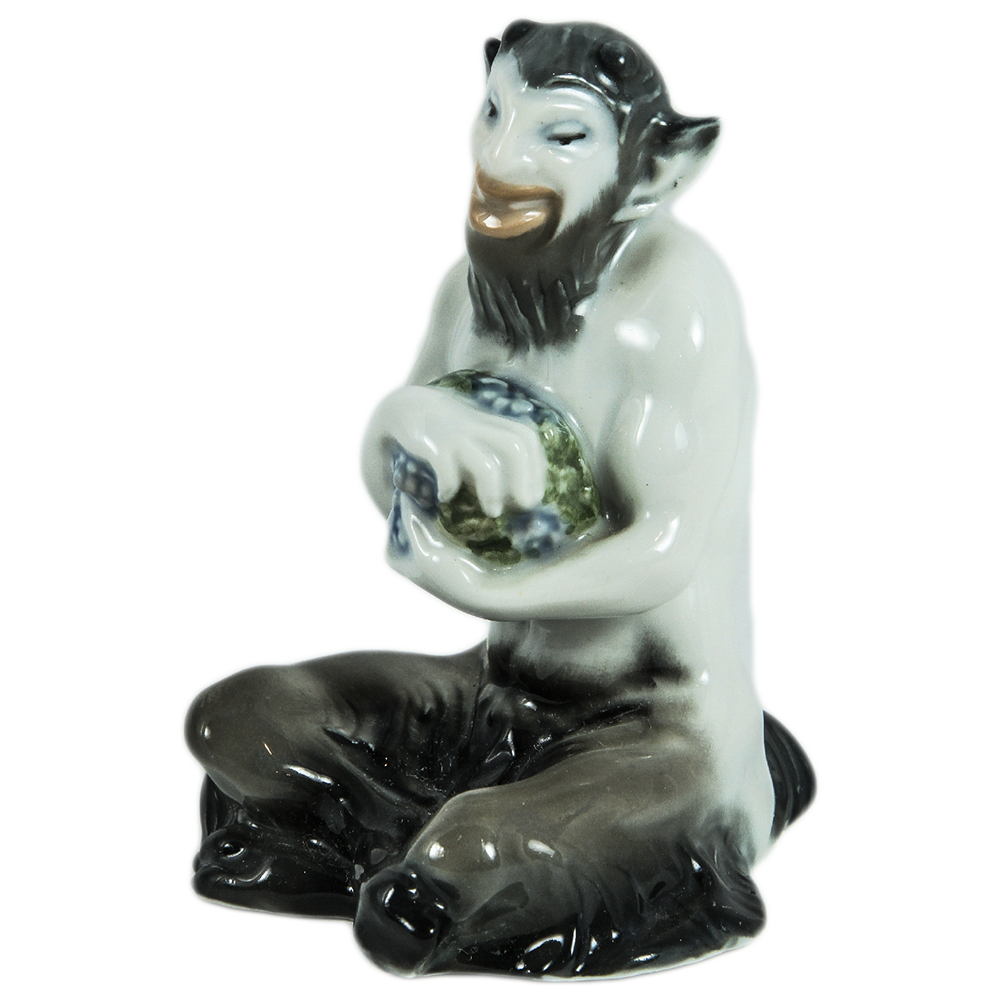
Meissen Satyr with Nymph by J. J. Kaendler
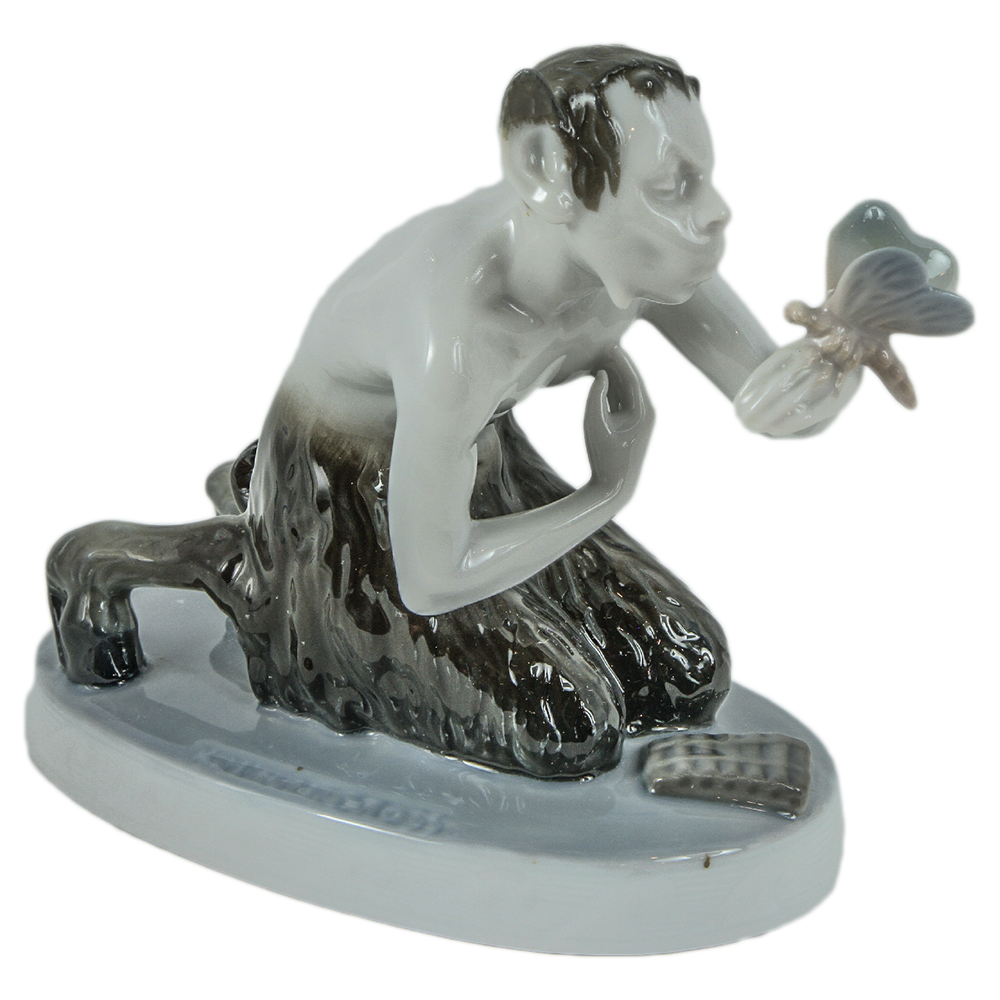
Rosenthal
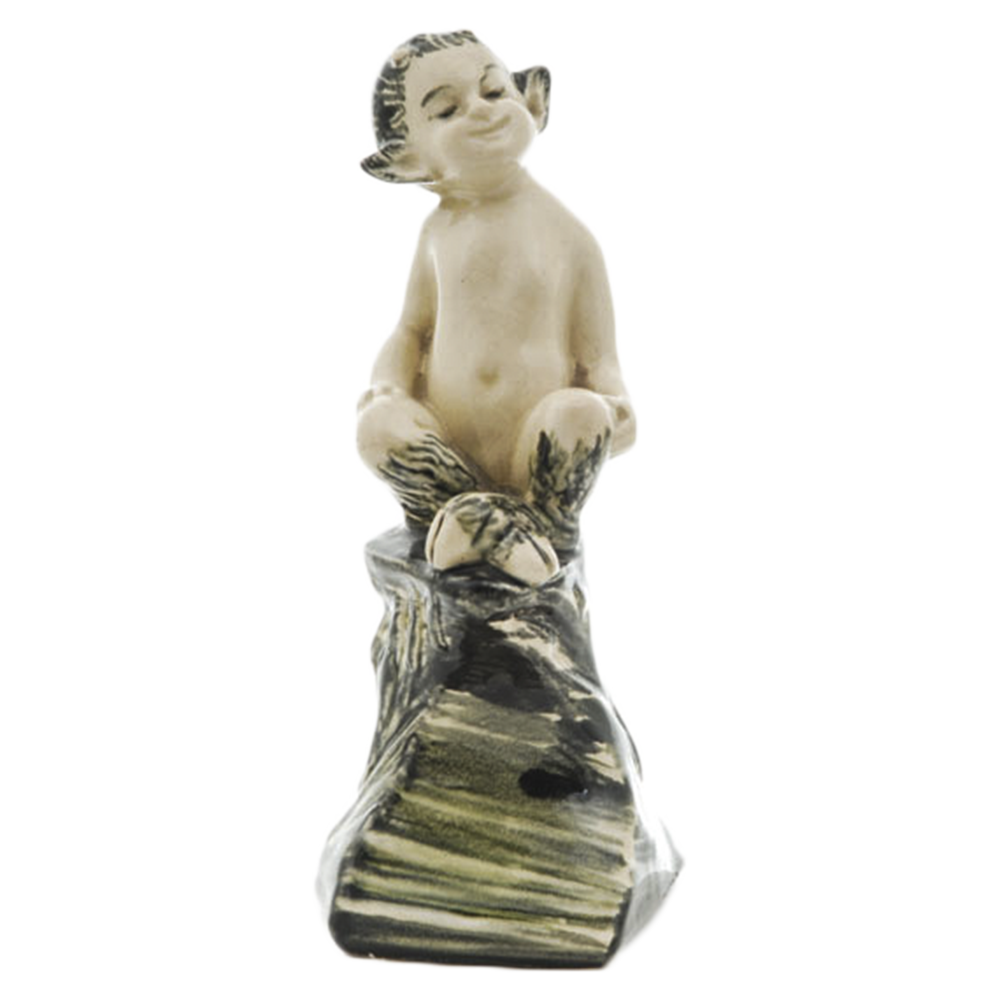
Royal Doulton Pan on a Rock
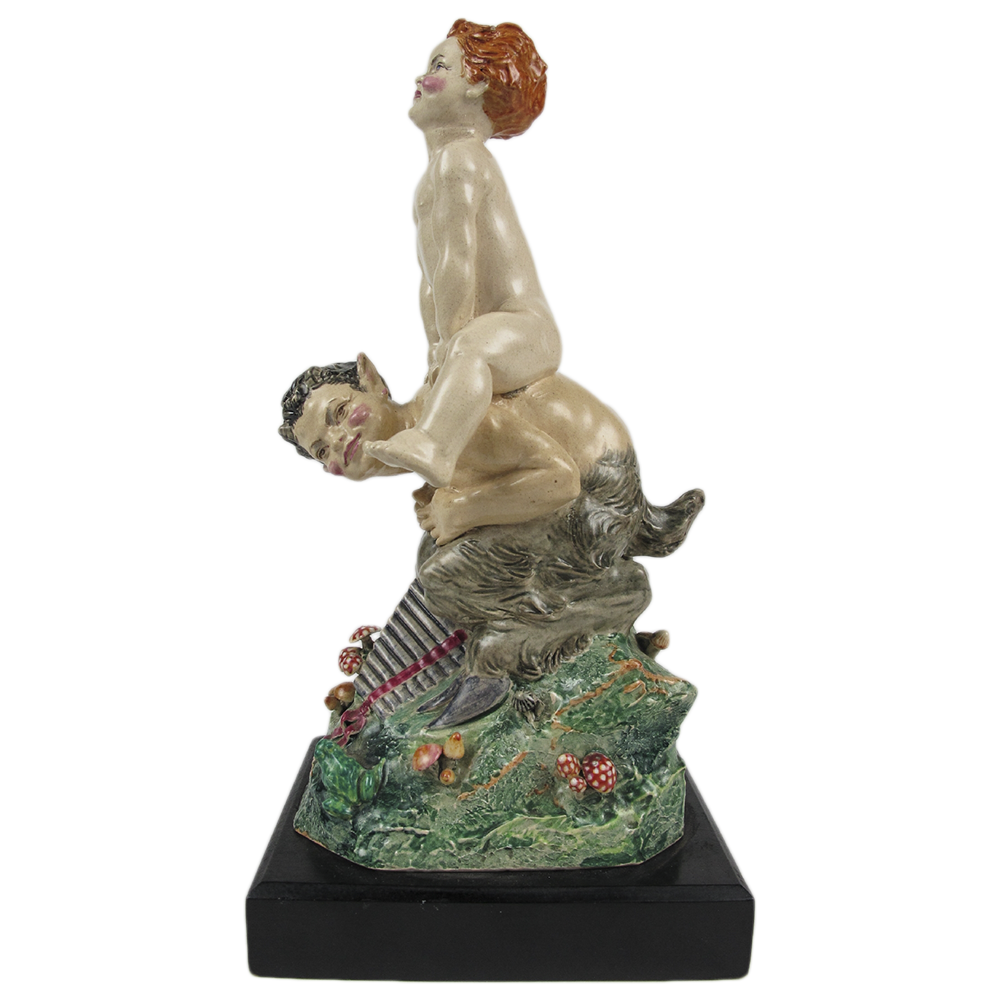
Leap Frog by C. Vyse
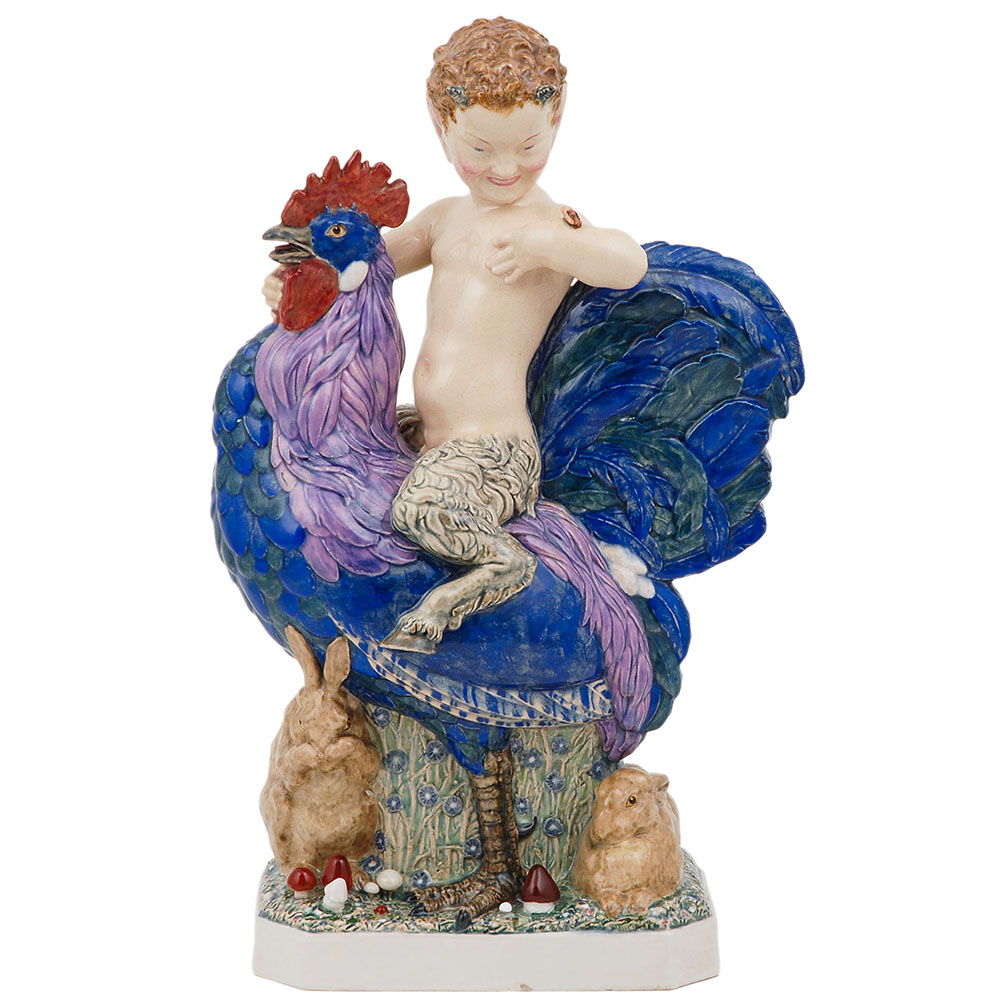
Chanticleer by H. Parr
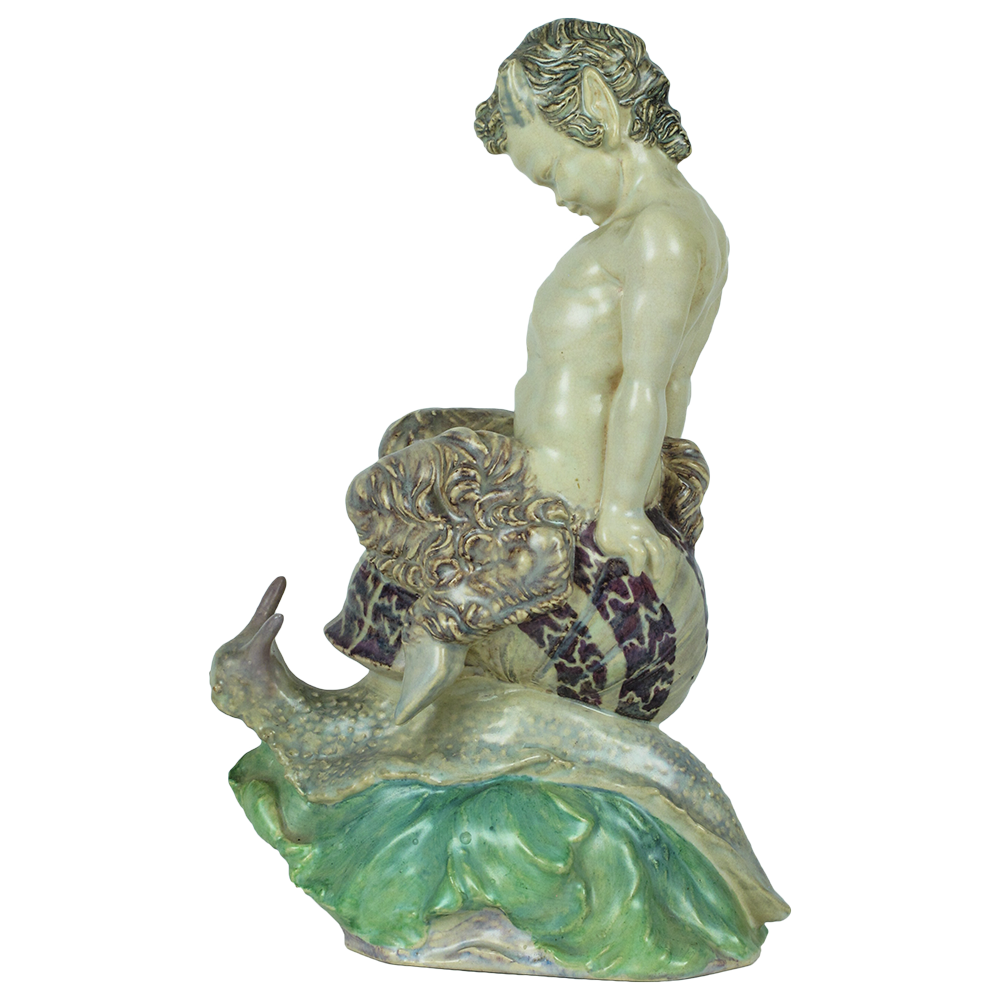
Morning Ride by C. Vyse
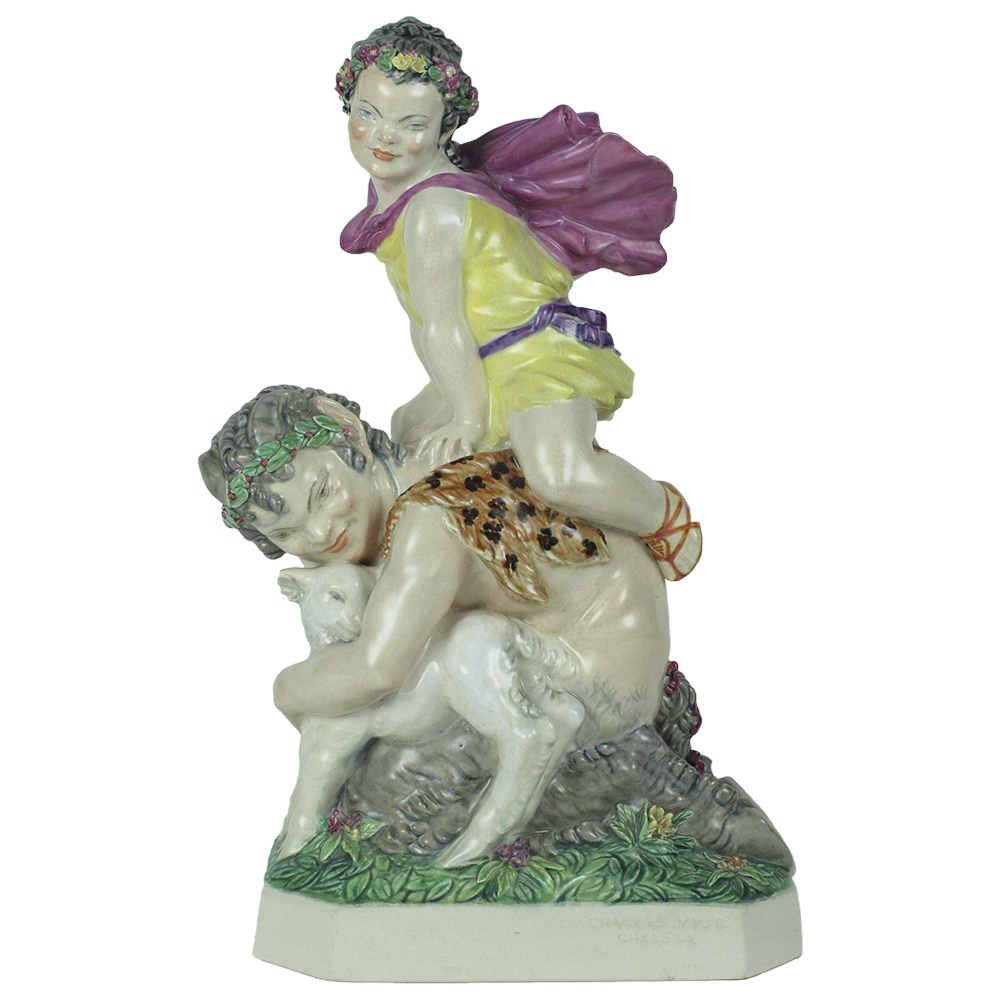
La Folie Bergere by C. Vyse
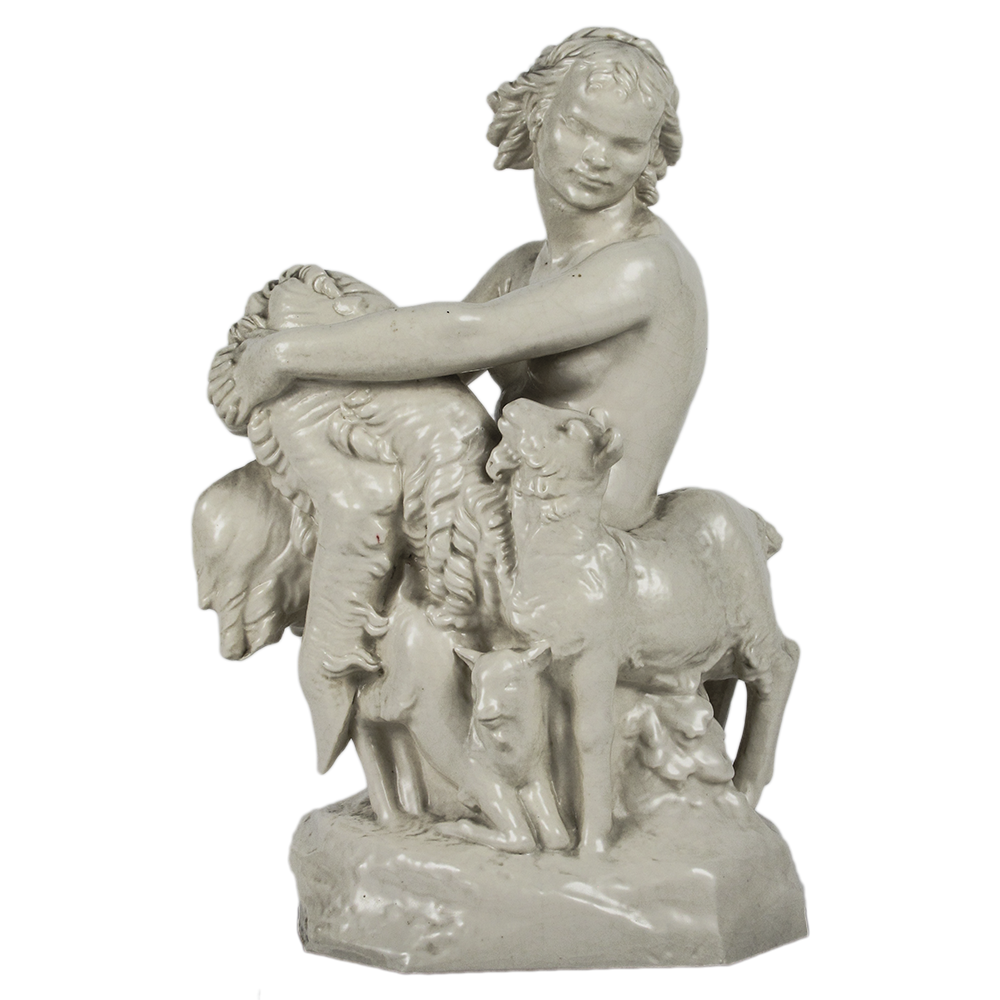
Pan's Sister by C. Vyse
